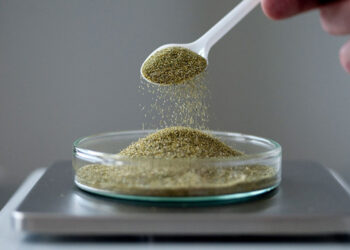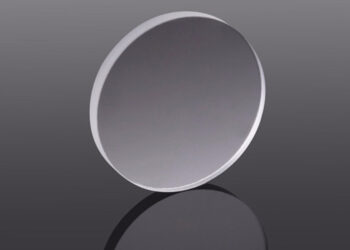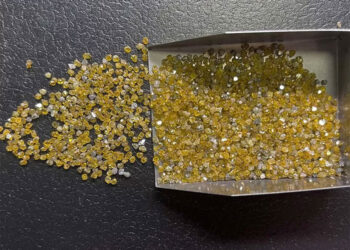Our Services
Contact info
We are always ready to help you. There are many ways to contact us. You may drop us a line, give us a call or send an email, choose what suits you most.
Need help?
15 W 47th St Suite #200 Second Floor, New York, 10036,United States
Tel: +1 917 302 9305
[email protected]
5G/6G Wireless
The dislocation density of single-crystal diamond is an important factor in the performance of modern electronic devices. This is because dislocations in the diamond are the cause of non-linear charge transport mechanisms. A number of studies have focused on ways to reduce the dislocation density of diamond. One such technique involves the incorporation of tungsten hexacarbonyl. Tungsten-incorporated diamond is an excellent source of low dislocation density, as it can inhibit the propagation of internal dislocations.
Single-crystal diamond is a crystal made up of carbon atoms. When placed in a suitable carbon-containing environment, hydrocarbon radicals attach themselves to the lattice and begin to grow. During crystal growth, crystal nuclei expand in both the lateral and vertical directions simultaneously.
Single-crystal diamonds are widely used in wireless communications for their high thermal conductivity. Their performance can be enhanced by improving their interface. For instance, copper/diamond composites have a thermal conductivity of 284 W/mK, which is much higher than that of single-crystal diamonds alone.
Diamond is an excellent material for high-resolution quantum sensors. The quantum properties of single-crystal diamond are so diverse that scientists are developing synthetic versions that are engineered with nitrogen vacancy defects. These defects could be the precursors to the next generation of quantum magnetic sensors. In the past, quantum mechanics has been used to develop transistors and lasers. In the future, the field of quantum technology will revolve around manipulating the characteristics of individual quantum systems.
Quantum properties
Diamond is an excellent material for high-resolution quantum sensors. The quantum properties of single-crystal diamond are so diverse that scientists are developing synthetic versions that are engineered with nitrogen vacancy defects. These defects could be the precursors to the next generation of quantum magnetic sensors. In the past, quantum mechanics has been used to develop transistors and lasers. In the future, the field of quantum technology will revolve around manipulating the characteristics of individual quantum systems.
-
1
The chemical composition of diamond is such that it has very low concentration of nuclear spins, especially in carbon-12 and carbon-13. This property reduces the probability of decoherence of quantum states. This is achieved by spin-orbit coupling, a relativistic effect that happens when the spin of a charge interacts with its orbital motion. This interaction reduces the decoherence time in single-crystal diamond, enabling a spin decoherence time of milliseconds at room temperature.
-
2
Single-crystal diamonds are highly dense, which makes it difficult to dope them. The diamond field effect transistor, for example, is mainly produced by the hydrogen terminal surface conductance. However, the diamond field-effect transistor can be made more powerful by introducing MoO3 as a transfer doping medium under the gate. This allows the forward conduction resistance to decrease to less than one-third of the EL SC diamond wafer and increase the transconductance by three times. Single-crystal diamond wafers can be used for many applications, including power electronics in satellites and RF power technology.
-
3
The main objective of the research is to develop a quantum network that can communicate over long distances. In order to achieve this, researchers need to develop stable emitters. For that, diamonds with NV defects may be the right material for the job. Moreover, diamonds with these defects can be used as quantum repeater nodes.
Growth mode
-
1
The single-crystal diamond is a promising material for next-generation electronics. Its exceptional properties make it suitable for high-power, high-frequency, low-loss, and high-temperature electronic devices. Growth mode of the single-crystal diamond depends on its face orientation. The growth of single crystals in an epitaxial growth mode is characterized by the formation of fewer defects than those in a lateral growth mode.
-
2
The diamond was grown in a five-minute growth mode. Raman spectra were measured on the different faces after five-min growth. A Raman spectrum obtained from face 100 showed the characteristic 1st order Raman diamond line with FWHM G1/2=2.7 cm-1. Other faces of the film were observed to contain broad bands of disordered carbon, including D band and trans-polyacetylene (TPA) bands.
-
3
The growth mode of single-crystal diamonds used in 5G communications was investigated by studying the formation of NCD films on different facets of a single crystal. Using a faceted SC diamond substrate, the researchers were able to deposit diamond films on different facets simultaneously. This allowed them to compare their morphologies under the same process parameters.
-
4
The diamonds grew on a variety of substrates under different parameters, including temperature, pressure, and methane concentration. The final sample was laser-cut to a thickness of 0.5mm and grew in a reaction chamber containing 3 percent methane.
-
5
The synthetic diamond was developed by scientists at the University of Illinois. The results showed that the single-crystal diamond was capable of detecting radio-frequency fields. The researchers were able to place a gradient across the diamond, giving it a Zeeman shift in its energy levels. This resulted in a measurement that encompassed the whole spectrum. This means that the single-crystal diamond could be used in 5G networks as a means to detect interference between cell towers.
Cost
-
1
Single-crystal diamond has been used in semiconductor devices, including those for 5G communications, because of its properties. Diamond is a high-atomic-density material, and this makes it difficult to dope it. In this study, a diamond field-effect transistor was made by reducing the forward conduction resistance by 3 times and using MoO3 as a transfer doping medium under the gate. The single-crystal diamond wafer has been used for advanced communications, RF power technology, and power electronics in satellites.
-
2
A diamond semiconductor device has a high-energy band gap, and its carrier mobility is higher than that of other semiconductor materials. Compared to silicon, it has a three-fold higher intrinsic carrier mobility, and is theoretically more stable. It also has high thermal conductivity and breakdown voltage, making it an ideal material for 5G communications.
-
3
Single-crystal diamond is becoming a popular material for 5G communications because of its high thermal and electrical conductivity. Diamonds are used in many devices that require very high thermal conductivity, including semiconductors. It is also widely used in solar power, which makes it an extremely affordable material.
-
4
Another diamond-based semiconductor is GaN-on-diamond. This material is used for satellite communications and defense radar. Its low-energy density allows it to be twice as efficient as its silicon counterpart. Moreover, diamond is also able to resist extreme conditions and remain cooler than its silicon counterpart.
-
5
The process of producing single-crystal diamond is based on the use of electrons in the diamond crystal. By pumping green light onto a diamond crystal, electrons are injected into the ms = 0 energy level. This process is known as population inversion.
Related Projects

lab grown diamonds
Nanometer Modified Diamond Powder

lab grown diamonds
CVD SC Diamond Optical Window

lab grown diamonds
HPHT Monocrystalline Diamonds




